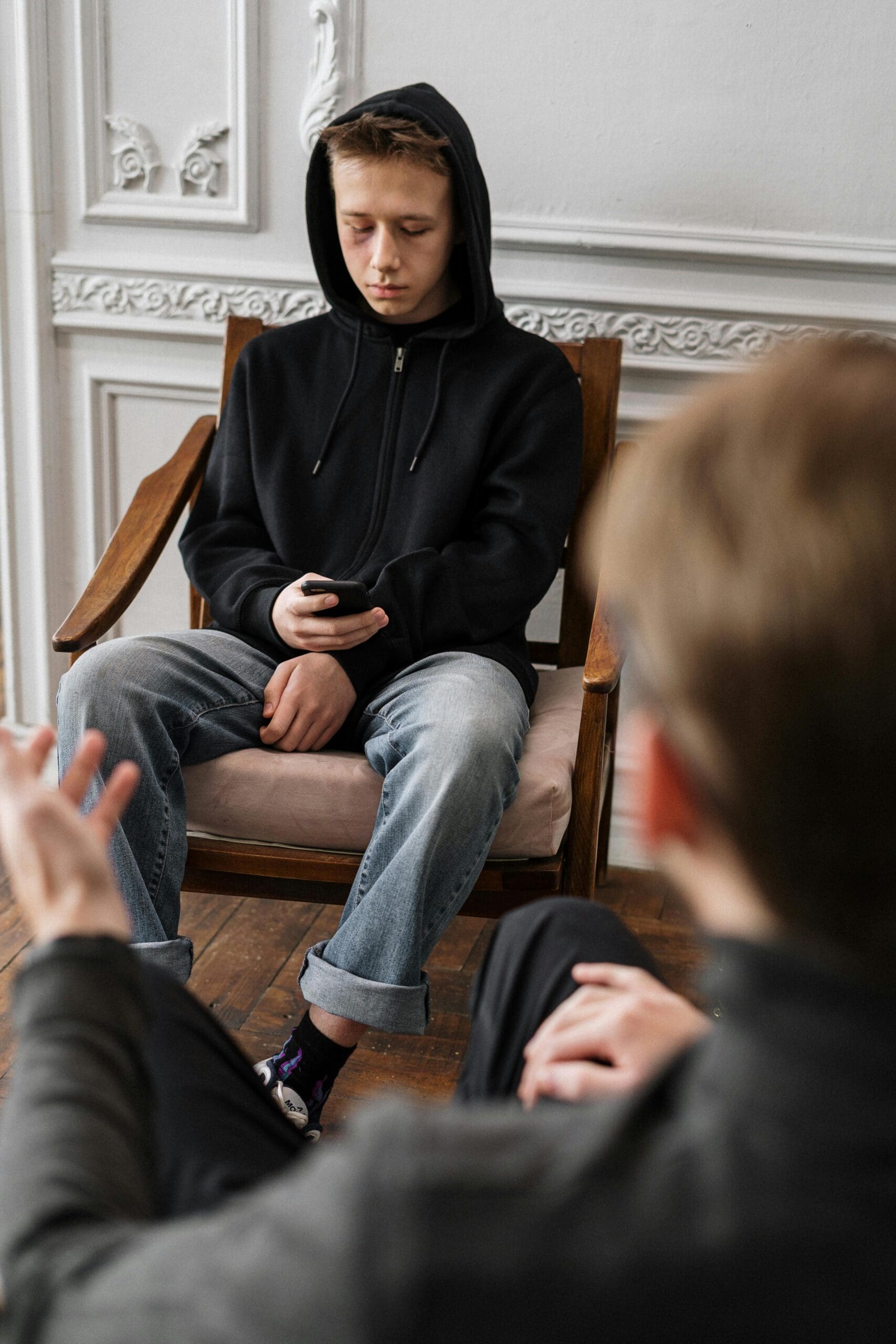Essential Tips for Setting Digital Boundaries With Teens
As a parent to two teenage boys, setting healthy digital boundaries is sometimes easier said than done. It can be a battle, and I do find myself saying “Put your phone away” as it is a device-free time. I get sick of my own voice, but have I got the digital boundaries right? probably not always, and it can be hard to get that balance right.
If I had my time again, would I have let them have access to social media at 13, or waited until at least 16? I would at least try to delay it as long as possible. That said, other kids at their school may have had access to social media, so for me, the online awareness/education piece is critical.
Tired of screen time battles? Take control with these 5 proven tips that help you set clear, healthy digital boundaries your teen will actually respect.
Do you have young children? Your Essential Guide for Digital Parents with Young Children
I am always learning and trying to adapt my approach, will it always work? No, not always.
As we are all very aware, in today’s digital age, teenagers are more connected than ever. Smartphones, social media, and the internet provide endless opportunities for communication, learning, and entertainment. However, this connectivity can come at a cost. Without proper digital boundaries, excessive screen time can lead to issues such as anxiety, sleep disturbances, and decreased academic performance. Setting healthy digital boundaries is essential to help your teens navigate the online world safely and responsibly.

The Importance of Digital Boundaries for Teens
According to a 2022 report by the Pew Research Center, 95% of teens have access to a smartphone, and 45% of teens say they are online almost constantly. These statistics highlight the urgent need to establish digital boundaries to ensure that technology enhances and supports rather than hinders their development.
This report also highlights their social media platform of choice, with increased use of Instagram and Snapchat, with TikTok and YouTube being the most widely used. Are we surprised? Not really, it is those platforms where they can get an immediate visual fix and will spend hours of “doom scrolling”.
Understanding the Risks of Excessive Screen Time
Excessive screen time can impact teenagers in several ways. Studies have shown that it can contribute to mental health issues, such as depression and anxiety. A research study published in JAMA Paediatrics found that teens who spend more than three hours a day on social media are more likely to develop these conditions.
Moreover, screen time can affect sleep patterns. The blue light emitted by screens can interfere with the production of melatonin, the hormone responsible for regulating sleep. This disruption can lead to sleep deprivation, which affects mood, cognitive function, and overall health.
- Academic Performance and Screen Time
Excessive use of digital devices can also impact academic performance. Teens who spend a significant amount of time on screens may find it difficult to concentrate on their studies, leading to lower grades and academic achievement.
5 Actionable Strategies for Setting Healthy Digital Boundaries
- Establish Screen-Free Zones
Designate certain areas of the home as screen-free zones to encourage face-to-face interaction and downtime. For example, implement a no-device policy at the dining table or in bedrooms to promote quality family time and improve sleep hygiene.

- Set Time Limits on Device Usage
Encourage teens to take regular breaks from screens by setting daily time limits. Apps like Screen Time for iOS and Digital Wellbeing for Android can help monitor and manage device usage. A study by the American Academy of Paediatrics suggests that limiting screen time to no more than two hours per day can help prevent negative outcomes.
My personal preference is to automate the turning on/off of the home Wi-Fi, so I am setting their expectations up front, without the need to constantly negotiate when it is available for them. That said I would make exceptions for when they need devices to study or access Google Classroom for homework.
- Encourage Alternative Activities
Help teens discover hobbies and activities that do not involve screens. Encourage physical activities, such as sports, hiking, or dancing, to promote physical health. Creative pursuits like painting, writing, or playing a musical instrument can also provide a fulfilling alternative to screen time.
- Model Healthy Digital Behaviour
Parents and guardians should model the behaviour they wish to see in their teens. By setting an example of healthy digital habits, such as putting away devices during family time and prioritising face-to-face interactions, you can encourage teens to do the same. You are going to have to cut down on your own “doom scrolling” in front of your teenagers.
- Discuss Online Safety and Privacy
Have open conversations with teens about the importance of online safety and privacy. Discuss the risks associated with sharing personal information online and the need to be cautious about who they interact with on social media. Encourage them to use privacy settings and to think critically about the content they post and consume. I like to use the Grandmother test, “Would you be happy to share that image, text, video or article with your Grandmothers?”?. If not, do not send it.
Related Article: Kids Online Safety: 12 Must-Follow Tips for Digital Parents
Why Digital Boundaries are Crucial
Setting healthy digital boundaries for teens is crucial in today’s technology-driven world. By understanding the risks of excessive screen time and implementing actionable strategies, parents and guardians can help teens develop a balanced approach to technology use. Remember, the goal is not to eliminate digital devices from their lives entirely but to encourage mindful usage that supports their overall well-being and development.
As teens learn to navigate the digital world responsibly, they will hopefully be better equipped to make informed decisions and maintain a healthy balance between their online and offline lives.
FAQs About Setting Healthy Technology Boundaries for Teens
Why do teens need healthy Technology boundaries?
Teens grow up in a world where phones, apps, and social media are ever-present, so clear boundaries help them avoid sleep issues, anxiety, social comparison, and distraction, helping balance screen time with offline life.
How can I create effective screen-free zones at home?
Designate areas like mealtimes at the table or bedrooms as no-phone zones. Having a central charging station and ending device use an hour before bed helps teens develop healthy habits and stronger family connections. Make sure to role model these behaviours yourself in front of your teens!!
Should parents make a digital family agreement?
Absolutely. A co-created media agreement clarifies expectations around app use, bedtime, privacy, and social media use. It empowers teens to take responsibility while keeping communication open and inclusive.
Disclaimer
The views and opinions expressed in this article are solely my own and reflect my personal experiences as a digital parent to two teenage, online game-playing boys. While I strive to provide helpful information and share what has worked for me, please remember that everyone’s situation is unique. The content provided here is not intended as professional advice. If you require specific guidance or support, I strongly encourage you to seek assistance from qualified professionals in the relevant field

